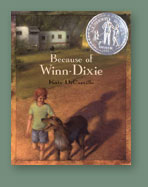The next morning Mrs. Welsch asked, “Wouldn’t you like to try a ham sandwich, or egg salad, or peanut butter?” Her mother looked quizzically at Harriet while the cook stood next to the table looking enraged.
“Tomato,” said Harriet, not even bothering to look up from the book she was reading.
~from Harriet the Spy by Louise Fitzhugh
Books and Food. Food and Books. It’s holiday time and in the Brown house that means a happy family, good books and festive food. But books with food? Sure thing.
This holiday season how about holding a literary feast? It’s yummy. It’s fun. And eating along with your favorite characters brings a story to life in a whole new way. Who didn’t wonder at Edmund’s passion for the exotic sounding Turkish Delight (a candy that tastes, disappointingly, more like the inside of a jelly bean than a treat from an exotic land.) Or Harry’s mug of Butter Beer. Snow Candy with Laura Ingalls Wilder. Chocolate Cake with Matilda.
Curious second graders inspired my first intentionally literary feast. My class fell in love with Sara Pennypacker’s impulsive Clementine but most of the class had never heard of Boston Cream Pie- a mysterious dessert that’s more cake and pudding than pie. Or even Clementine’s namesake citrus fruit. To celebrate the last chapter and the end of the semester we got into the literary spirit with a Clementine feast. Would you believe every seven year old tried- and claimed to enjoy- lentils? Yes! Transformative. It was a book, a meal and a library period that none of us will ever forget.
Reading Because of Winn-Dixie? How about a feast of egg salad sandwiches, Dump punch, pickles and lozenges (I recommend horehound candies as a reasonable substitute for Kate DiCamillo’s mystical treats.) A family reading Kathi Appelt’s Keeper could have a wonderful celebratory meal of Blue Crab Gumbo. Harriet’s tomato sandwiches are straight forward- bread, mayonnaise and sliced tomatoes. Period.
Need a bit more guidance? There are oodles of cookbooks with middle-grade literary connections. Lots of them were even written by the original middle-grade authors. Check out
Mary Poppins in the Kitchen: A Cookery Book with a Story P. L. Travers
The Redwall Cookbook by Brian Jacques

Jane Yolen and her daughter Heidi Stemple gather dishes from all across the story spectrum in Fairy Tale Feasts: A Literary Cookbook for Young Readers and Eaters
Eat like you’re on the prairie with Barbara Walter’s The Little House Cookbook.
Join the masses of Potter fans with Dinah Bucholz’s The Unofficial Harry Potter Cookbook: From Cauldron Cakes to Knickerbocker Glory–More Than 150 Magical Recipes for Muggles and Wizards. She has also written The Unofficial Narnia Cookbook, with everything from Turkish Delight to Fire Roasted Pavenders (a kind of small fish.)
Or satisfy Roald Dahl fanboys and fangirls with treats from Roald Dahl’s Revolting Recipes.
As a FROM THE MIXED-UP FILES exclusive, here’s my kid-friendly recipe for Momma’s Sour Cream Ambrosia, fresh from the fridge in my middle-grade novel THE MAP OF ME.
Sour Cream Ambrosia
1 packet Jello- cherry or lime are “traditional” but use any flavor you prefer, prepared by packet instructions
3 cups mini-marshmallows
1 8oz container sour cream (may use low fat)
1 8oz container whipped topping such as Cool Whip
1 small jar maraschino cherries, drained
1 small can mandrin oranges, drained
2 cups crushed pineapple, drained, juice reserved
1 cup toasted coconut (optional)
Mix all ingredients except coconut in a large bowl. If necessary, adjust to light moist consistency by gently stirring in some of the reserved pineapple juice. Sprinkle top with coconut.
“If more of us valued food and cheer and song above hoarded gold [as the hobbits do], it would be a merrier world.” The Hobbit by J. R. R. Tolkein. So as you settle into the holiday season read, munch, and be merry!
What’s your favorite literary food?
Tami Lewis Brown believes you can never have enough hot buttered toast, whether dining with a hobbit or Mercy Watson.





















